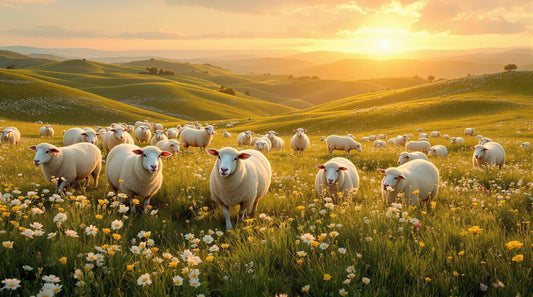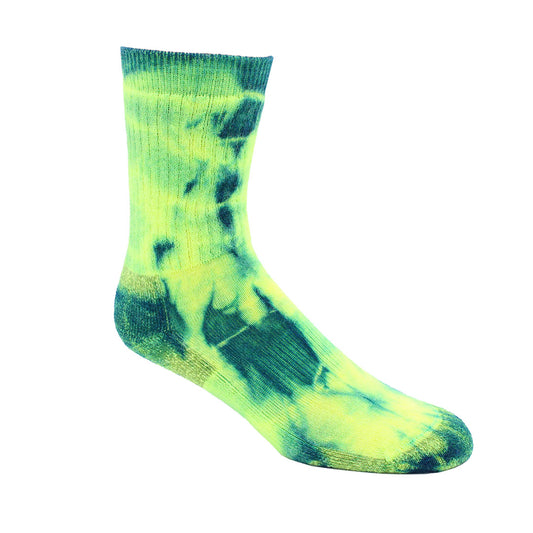Alpaca farming has transformed over thousands of years, combining ancient Andean techniques with modern eco-friendly practices. Here's what you need to know:
- Traditional Methods: Indigenous communities used rotational grazing, natural water storage (qocha), and hand-shearing to protect both alpacas and the environment.
- Modern Sustainability: Practices like using alpaca manure as fertilizer, reducing water use, and ethical animal care have made alpaca farming a low-impact agricultural model.
- Eco-Friendly Fiber: Alpaca fiber is biodegradable, durable, and requires minimal water and chemicals, making it a key material for slow fashion.
This balance of heritage and innovation positions alpaca farming as a leader in sustainable agriculture and ethical fiber production.
The Story of Alpacas and Sustainable Farming
Older Methods of Alpaca Farming
How Indigenous Communities Raised Alpacas
Indigenous Andean communities developed advanced alpaca farming techniques that worked in harmony with nature. These methods included carefully planned breeding strategies that prioritized animal care and long-term resource management [1][6].
One standout practice was rotational grazing, where herds were moved between pastures based on the seasons. This approach allowed vegetation to recover naturally, preventing overgrazing and ensuring the grasslands remained fertile for future use [6][3]. To support this system, communities used water management structures like qocha to keep pastures viable during dry periods, creating a balanced approach to land use.
"It's a way of mitigating climate change and preserving what our ancestors taught us." - Tulia García of CEDAP [2]
These herding techniques were paired with thoughtful fiber harvesting methods, which carried both cultural and economic weight.
Shearing and Using Alpaca Fiber in the Past
Harvesting alpaca fiber was more than a practical activity - it was a cultural tradition. Indigenous communities held annual shearing ceremonies that focused on the animals' health while ensuring the highest-quality fleece [1][7]. Historically, the best fibers were set aside for royalty, reflecting their importance in society.
Shearing was done with hand tools, emphasizing care for the animals. Once the fiber was collected, it was sorted by quality and color, cleaned using natural techniques, and spun by hand. This process preserved the fiber's unique qualities and minimized waste, aligning with eco-friendly principles.
The Spanish conquest disrupted these traditions, forcing alpacas into less hospitable environments and breaking established breeding systems [1][7]. Despite these setbacks, indigenous groups like the Aymara and Mapuche in Chile upheld their traditional practices. Today, their ancestral knowledge is influencing modern approaches to sustainable alpaca farming [8].
Modern Eco-Friendly Alpaca Farming
Greener Farming Practices
Today's alpaca farming incorporates eco-conscious techniques like using alpaca manure as a natural fertilizer and adopting water-saving methods. By replacing synthetic fertilizers with manure, farmers can maintain productivity while cutting down on chemical use [3].
One standout example is the Guitarrachayocc wetland project, where traditional qocha dams expanded water storage to 90,000 m³, showcasing the importance of water conservation in farming [2]. Compared to other livestock operations, alpaca farming has a much smaller environmental footprint, positioning it as a leader in sustainable agriculture [4].
In addition to environmentally friendly methods, the industry also focuses on treating alpacas with care and respect.
Ethical Alpaca Care
Ethical farming practices are now a priority, balancing animal welfare with farm efficiency. Farmers provide alpacas with spacious living areas and use gentle handling techniques, especially during processes like shearing. These approaches combine age-old knowledge with modern veterinary practices to ensure the animals stay healthy and stress-free.
CEDAP's conservation project is a great example of blending traditional methods with modern strategies, benefiting both the alpacas and their environment [2]. This ethical approach aligns seamlessly with the ideals of slow fashion.
Alpaca Farming and Slow Fashion
The sustainable practices and ethical care in alpaca farming naturally support the principles of slow fashion. Annual shearing provides a renewable resource with minimal environmental impact, making alpaca fiber a perfect fit for this movement [3].
Alpaca fiber brings several environmental perks:
| Aspect | Benefit |
|---|---|
| Water Usage | Significantly less water needed compared to other livestock |
| Biodegradability | Breaks down naturally, reducing waste |
| Methane Emissions | Lower emissions, with only 87% from enteric fermentation [4] |
These features reinforce alpaca farming's role as a sustainable model, benefiting both the planet and ethical fashion. As the industry grows, it continues to raise awareness about the importance of eco-friendly practices in agriculture [3].
Why Alpaca Fiber is Better for the Planet
Naturally Decomposes
Alpaca fiber breaks down naturally, unlike synthetic materials that add to microplastic pollution. This makes it a smart pick for eco-conscious shoppers looking to cut down on landfill waste [3]. Wearing an alpaca fiber sweater has a carbon footprint of just 0.449 kg CO2 equivalents, with most emissions coming from production and distribution [4].
Requires Less Water and Fewer Chemicals
Alpaca farming uses far less water and fewer chemicals compared to traditional livestock-based fibers. This makes it a more environmentally friendly option [3].
Here's how alpaca fiber stacks up against other materials:
| Aspect | Alpaca Fiber | Traditional Fibers |
|---|---|---|
| Water Usage | Minimal | High |
| Chemical Processing | Limited | Extensive |
| Environmental Impact | Lower emissions | Higher environmental cost |
On top of its eco-friendly production, alpaca fiber's long-lasting nature ensures its benefits extend well into its use.
Durable and Long-Lasting
Alpaca fiber is incredibly durable, making it a great choice for clothing and textiles. Its strength means products last longer, cutting down on the need for frequent replacements [3]. This aligns with the slow fashion movement, which focuses on reducing the demand for fast fashion.
In Peru, renewable energy plays a big role in alpaca fiber production, further boosting its eco-friendly appeal [5]. Plus, alpaca farming generates much lower methane emissions compared to other livestock, enhancing its reputation as an environmentally responsible option [4]. This mix of durability and sustainable production makes alpaca fiber a standout choice in eco-friendly fashion.
Conclusion: Alpaca Farming and Its Role in Eco-Friendly Practices
Insights into Alpaca Farming
Modern alpaca farming has evolved by blending traditional knowledge with environmentally conscious methods. This approach emphasizes renewable energy and sustainability across farming operations, showcasing a shift toward more responsible agriculture.
These efforts highlight the potential for further advancements in eco-friendly farming.
The Future of Sustainable Alpaca Farming
Inspired by indigenous practices in Ecuador, which integrate alpacas into diverse farming systems, the industry continues to explore ways to benefit both local communities and the environment. This approach demonstrates how agriculture can support ecosystems while improving livelihoods. By focusing on sustainable fiber production and empowering indigenous communities, alpaca farming offers a model for reducing agriculture's environmental footprint.
Key areas for future growth in alpaca farming include:
| Focus Area | Future Development |
|---|---|
| Fiber Production | Improving efficiency and lowering environmental impact |
| Energy Usage | Increasing reliance on renewable energy sources |
| Water Management | Minimizing wastewater and conserving water resources |
| Community Impact | Boosting economic independence for indigenous groups |
These advancements position alpaca farming as a leader in sustainable agriculture, providing a path for other industries to follow while promoting environmental care and cultural heritage.









